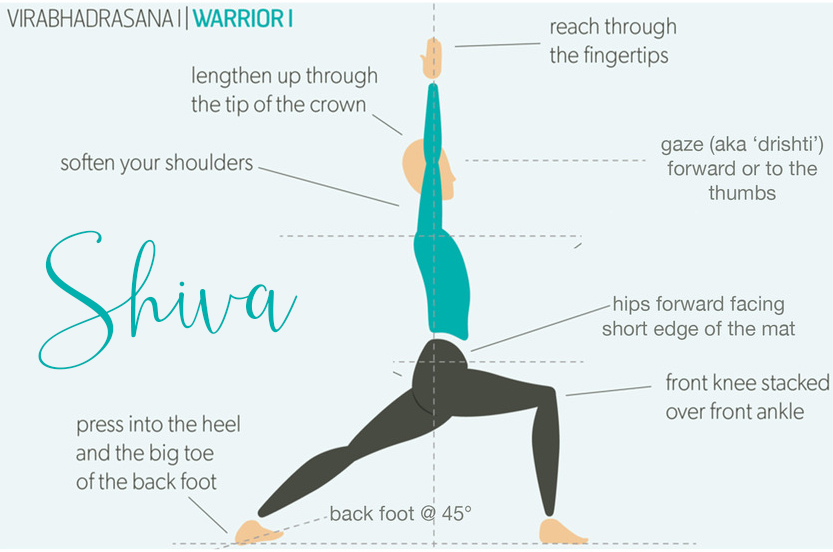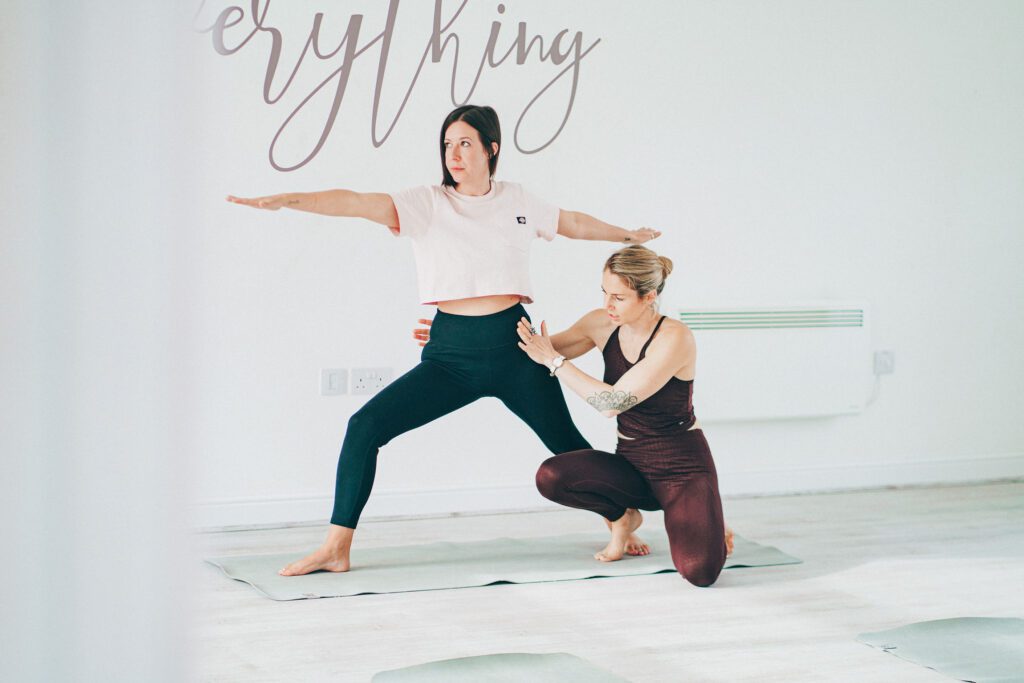What we covered in week 3:
This week was all about the WARRIOR poses in our beginner yoga class. We discussed both warrior 1 & 2, as well as recaping our sun salutations, and downward facing dog alignment.
What is the Sanskrit word for Warrior pose:
The Sanskrit for ‘Warrior Pose’ is Virabhadrasana, and we use the terms Virabhadrasana A (Warrior 1), and Virabhadrasana B (Warrior 2). It is named after the fierce warrior Virabhadra, a mythical character from Hindu mythology. “VIRABHADRA” literally means “warrior” as these poses are about strength, stability and finding patience within the pose. Both are dynamic poses that require holding the position for an extended period of time from 5 breaths onwards.
What is Warrior 1?
Warrior is a foundational pose that is practiced in many styles of yoga. It’s a brilliant pose that really helps to open the hip flexors (perfect for those who have been sitting all day). Warrior 1 is a powerful pose that not only strengthens and stretches the body but also cultivates focus, grounding, and inner strength. It is important to listen to your body and modify the pose as needed to suit your individual flexibility and comfort level.
There are great benefits of the postures such as challenging balance and improving posture as the alignment of the pose encourages us to stretche and strengthen the feet, ankles, calves and thigh muscles. Warrior 1 can really help us to improve mobility in shoulders and hip joints and opens the chest and lungs.

What is Warrior 2?
Warrior 2 is a posture that develops stamina and endurance. Warrior 2 primarily targets the legs, including the quadriceps, hamstrings, and calves. Holding the pose engages and strengthens these muscles, promoting stability and balance. It also activates the core muscles, helping to build abdominal strength.
Warrior 2 can also helps to open up the hips and stretches the inner thighs and groin muscles. Over time, regular practice can improve flexibility and mobility in these areas.

Incase you missed class or just want a in-depth recap, please click the link below to watch the full lesson!
